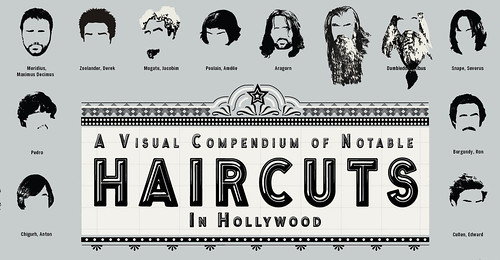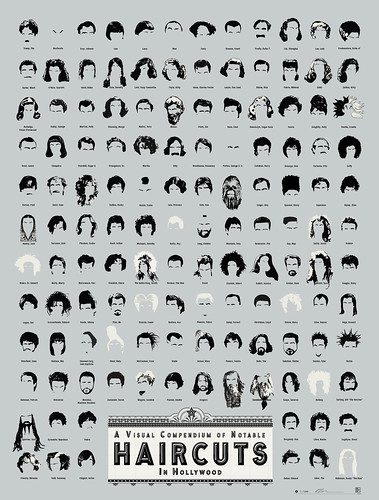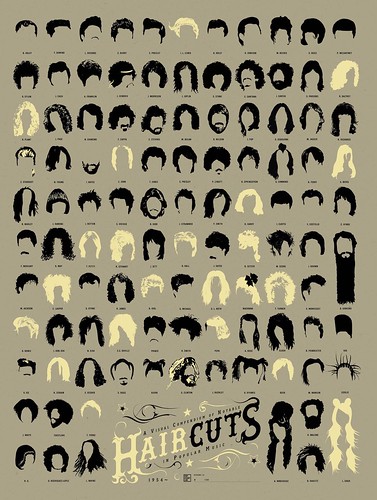 |
| Sarah Lane (inset), dance double for Natalie Portman in Black Swan |
Natalie Portman’s dance double for
Black Swan, American Ballet Theatre soloist Sarah Lane (27) claims that only 5% of the full-body dance shots are of the Oscar Winning Actress and the rest show Lane’s body with Portman’s head digitally pasted by the Visual Effects Team.
Her claims follow the LA Times interview of the film’s choreographer and Portman’s fiance’, Benjamin Millepied, saying that “There are articles now talking about her dance double [American Ballet Theatre dancer Sarah Lane] that are making it sound like [Lane] did a lot of the work, but really, she just did the footwork, and the fouettés, and one diagonal [phrase] in the studio,” he said. “Honestly, 85 percent of that movie is Natalie.”
But Lane affirms that the only shots who are definitely Portman’s are the ones with the head and arms. In fact, in those dance scenes just from the position and movement of her arms it is evident for the trained eye that Portman didn’t have any serious classical ballet training.
Sarah Lane is unhappy that she wasn’t even credited appropriately: she is only the “Hand Model”, “Stunt Double” and “Lady in the Lane” (a brief walk-on role).
She also claims that the film’s producer Ari Handel has instructed her not to talk about her performance in the film to the press until the Oscars, even without a clause in her contract that would have stipulated this. “They wanted to create this idea in people’s minds that Natalie was some kind of prodigy or so gifted in dance and really worked so hard to make herself a ballerina in a year and a half for the movie, basically because of the Oscar,” says Lane. “It is demeaning to the profession and not just to me. I’ve been doing this for 22 years…. Can you become a concert pianist in a year and a half, even if you’re a movie star?”
A Visual Effects reel that clearly showed how Portman’s head was pasted onto Lane’s body was leaked to You Tube, but was promptly removed by the producing studio, Fox Searchlight.
Sarah Lane says that the Portman’s campaign for the Oscars was mainly based on her transformation into a ballerina. There was a lot of emphasis made on the strict, ascetic diet, the extensive and gruelling training that Portman had to go through in order to get her ballerina body. But she says that Portman, from a professional’s standpoint “does not look like a professional dancer at all and she cannot dance in pointe shoes. And she can’t move her body, she is very stiff.” Lane says that she is aware of the fact that the whole cover-up is not a personal thing against her but a “political thing” but she is unhappy that in the process she lost the credit she deserves as a professional dancer who has trained for most of her life.
Portman, on the other hand, in interviews, has not claimed that she did all the dancing: “I do have a double for the complicated turning stuff. It was not anything I ever could have done in a year, nothing I could’ve caught up with. But I think it was just better for all of us if I did as much as possible.”
In a joint statement released by Fox Searchlight the filmmakers support Portman saying that she did “most of the dancing featured in the final film”.
The
Black Swan body double scandal is reminiscent of the iconic Eighties movie
Flashdance (1983), where the film’s producers kept the star’s dance double hidden from the press to give the impression that newcomer Jennifer Beals did all the dancing herself. But the truth was that the welder-by day-dancer by night character that Beals played had three dance doubles: Marine Johan, gymnast Sharon Shapiro and male breakdancer Crazy Legs.
Other stars have handled the credit given to body doubles differently:
In spite of extensive vocal training before the film, Audrey Hepburn admitted that 90 % of her singing for her role in
My Fair Lady (1964) was dubbed by Marni Nixon. Many thought that her singing being dubbed has contributed to Hepburn not being nominated for that year’s Best Actress Oscar.
Also, Quentin Tarantino and Uma Thurman have both talked about Uma’s body double in Kill Bill 1&2, in the interviews promoting the film. Thanks to this acknowledgement, stuntwoman Zoe Bell, got subsequent roles and she even starred in a documentary about Hollywood stuntwomen.
Keanu Reeves thanked his stuntmen for Matrix Reloaded in a very generous and gracious way: he spent $200 000 buying all his stuntmen 12 Harley-Davidson motorcycles. He said: "I just wanted to say thank you to all these great men who helped me make one of the best movie fights in the history of cinema."
The
Black Swan scandal shows that nothing is new in Hollywood: in the musical classic of 1952,
Singin’ in the Rain, Debbie Reynolds’ character, unknown Kathy Selden, dubs the singing voice of the silent-era movie star Lina Lamont (Jean Hagen), who has an unfortunately shrill voice inappropriate for the newly invented talkies.
 |
| Debbie Reynolds and Jean Hagen in Singin' in the Rain. |
Making a film is supposed to be all “smoke and mirrors” and the stars of the movie will obviously get most of the attention. But every time the credits roll at the end of a film, the hundred of names written there, are a reminder that making a film is always a joint accomplishment.
In Italiano:
La controfigura di Natalie Portman per le scene di ballo per Il Cigno Nero, Sarah Lane (27), prima ballerina per l’American Ballet Theatre sostiene che solamente 5% delle scene di balletto a figura intera sono dell’attrice vincitrice del premio Oscar, ed il resto contengono il corpo di Lane con la testa di Natalie Portman aggiunta dalla squadra degli effetti speciali.
Le sue dichiarazioni vengono dopo l’intervista per il giornale LA Times del coreografo del film e fidanzato di Portman, Benjamin Millepied, che ha dichiarato: “Ci sono articoli ora che parlano della sua controfigura [ballerina dell’American Ballet Theatre Sarah Lane] che facciano sembrare che [Lane] ha fatto la maggior parte del lavoro, ma veramente, lei ha fatto solamente la parte con i piedi, e le fouettés, e una diagonale [frase] nello studio.””Onestamente, 85% di quell film è Natalie.”
Ma Sarah Lane afferma che le uniche scene che siano della Portman sono quelle che contengono le braccia e la testa. Infatti, in quelle scene di ballo, solamente dalla posizione e il movimento delle sue braccia è evidente per un occhio che se ne intende del ballo, che Portman non ha veramente fatto seri corsi di balletto classico.
Sarah Lane è delusa poiché nei titoli di coda del film appare come “Controfigura per la mano”, “Stunt double” e “Signora nel vicolo” (un piccolo ruolo senza dialogo).
In più, Sarah Lane sostiene che il produttore del film Ari Handel le abbia chiesto di non parlare del suo lavoro nel film prima degli Oscar, anche se nel suo contratto non esistesse una clausola del genere. “Hanno voluto creare questa idea nella mente delle persone, che Natalie fosse un prodigio del ballo e che veramente abbia lavorato così tanto, da diventare una ballerina in un anno e mezzo per il film, tutto questo praticamente per l’Oscar.” dice Lane. “È umiliante per la professione e non solamente per me. Io sto facendo questo da 22 anni…Puoi diventare un pianista da concerto in un anno e mezzo, anche se sei uno star dei film?”
Un video degli effetti speciali che mostra chiaramente come la testa di Sarah Lane è stata sostituita con quella della Portman su You Tube, non è più disponibile, ritirato dallo studio produttore Fox Searchlight.
Qui potete vedere il video che mostra la sostituzione delle teste dalla squadra degli effetti speciali.
Sarah Lane sostiene che la campagna per l’Oscar di Portman si è basata principalmente sulla sua trasformazione in una ballerina. Con tanto accento messo sulla dieta stretta, ascetica, e sull’allenamento duro che Portman abbia subito per ottenere il suo corpo da ballerina. Ma, Lane dice che dal punto di vista di un professionista, Portman “non sembra per niente una ballerina professionista e non può ballare sulle punte. E non sa muovere il suo corpo, è molto rigida.” Lane dice che è consapevole del fatto che questa dissimulazione della verità non sia una cosa personale contro di lei, invece è una cosa “politica”, ma è scontenta che nel processo abbia perso il riconoscimento per il suo lavoro, come professionista che ha ballato per la maggior parte della sua vita.
Portman dall’altra parte, nelle interviste, non ha sostenuto che lei abbia ballato interamente, “Ho una controfigura per cose come dei giri complicati. Non era qualcosa che avrei potuto imparare in un anno, niente che avrei potuto ricuperare. Ma penso che sia stato meglio per tutti che io abbia fatto il più possibile.”
Lo studio produttore Fox Searchlight ha rilasciato un comunicato stampa sostenendo la Portman, dicendo che lei sia nella “maggior parte del ballo del film”.
Lo scandalo della controfigura di ballo per Il Cigno Nero fa pensare al film iconico degli anni Ottanta Flashdance (1983), dove i produttori hanno tenuto nascosta dalla stampa la controfigura di ballo di Jennifer Beals, per dare l’impressione che la nuova star del film ballasse nel film. Ma in verità, il personaggio saldatrice-di giorno-ballerina di notte che Jennifer Beals ha recitato ha avuto tre controfigure di ballo: Marine Johan, gymnast Sharon Shapiro ed il breakdancer uomo Crazy Legs.
Altre star dei film hanno gestito il riconoscimento dato alle controfigure in modo diverso:
Nonostante abbia allenato molto la sua voce prima dell’inizio delle riprese, Audrey Hepburn ha riconosciuto che 90% di quello che abbia cantato per My Fair Lady (1964), è stato doppiato da Marni Nixon. Tanti hanno pensato al tempo, che Hepburn non sia stata nominata per un Oscar proprio perche le sue canzoni erano doppiate.
Anche Quentin Tarantino e Uma Thurman, nelle interviste per la promozione di Kill Bill hanno parlato della controfigura di Uma Thurman. Grazie a questo riconoscimento, la stuntwoman Zoe Bell, ha ricevuto ruoli successivi e ha fatto parte di un documentario sulle donne stunt di Hollywood.
Keanu Reeves ha ringraziato i suoi stuntmen per Matrix Reloaded in un modo molto generoso: ha speso $200 000 per tutti i suoi 12 stuntmen comprando delle moto Harley Davidson. Reeves ha detto: ”Volevo solamente ringraziare tutti questi uomini fantastici che mi hanno aiutato di fare una delle scene di azione più belle della storia del cinema”.
Sembra che non c’è niente di nuovo a Hollywood: nel musical classico Cantando sotto la Pioggia del 1952, il personaggio di Debbie Reynolds, la sconosciuta Kathy Selden, doppia la voce della star dei film muti Lina Lamont (Jean Hagen), che ha una voce stridente, non adatta per i nuovi inventati film sonori.
Ovviamente che il mondo del cinema ha tanto in comune con l’illusionismo e gli star di un film riceveranno la maggior parte dell’attenzione. Ma, ogni volta che i titoli di coda scorrino alla fine di un film, le centinaia di nomi scritte lì, sono un memento che fare del cinema non è mai una impresa individuale.












